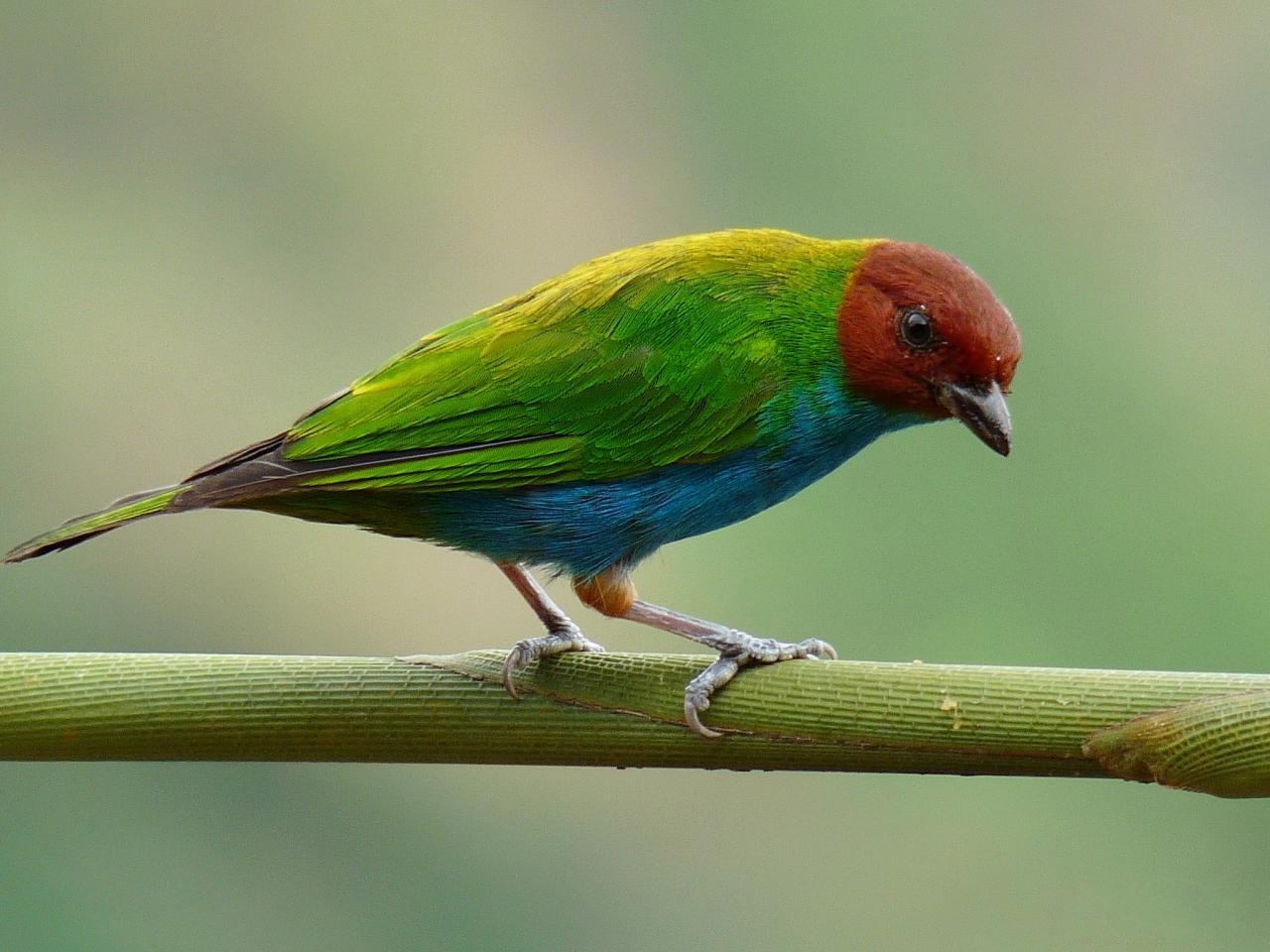Bay-headed Tanager
A species of Tangara Tanagers Scientific name : Tangara gyrola Genus : Tangara Tanagers
Bay-headed Tanager, A species of Tangara Tanagers
Botanical name: Tangara gyrola
Genus: Tangara Tanagers
Content
Description General Info
 Photo By Julian Londono , used under CC-BY-SA-2.0 /Cropped and compressed from original
Photo By Julian Londono , used under CC-BY-SA-2.0 /Cropped and compressed from original Description
Adult bay-headed tanagers are 14 cm long and weigh 19.5 g. The nominate race T. g. gyrola is mainly green apart from a chestnut head, a blue or green belly, and a thin gold collar on the hind neck. Sexes are similar, but immatures are duller with chestnut-flecked green heads. There is considerable plumage variation between the various subspecies, and T. g.viridissima of northeast Venezuela and Trinidad has green underparts concolorous with the rest of the body plumage. The bay-headed tanager's song is a slow seee, seee, seee, tsou, tsooy. 
Size
12 cm
Nest Placement
Tree
Feeding Habits
Bay-headed Tanager primarily consumes seeds, fruits, and insects. It forages in the canopy, exhibiting agility in searching for a variety of food sources. Adapting to different elevations, it showcases a flexible diet that enhances its survival across diverse habitats.
Habitat
Bay-headed Tanager thrives in diverse environments, predominantly opting for lowland and montane evergreen forests. These habitats encompass forest edges, secondary growth, and plantations—all areas conducive to bay-headed Tanager's presence. Spanning broader neotropical regions, bay-headed Tanager shows notable habitat flexibility, adapting to both forested and non-forested terrains. Seasonal patterns influence habitat utilization, with higher forest preference noted during the nonbreeding season compared to the breeding season.
Dite type
Frugivorous
General Info
Feeding Habits
Bird food type

Fruit
Behavior
These are social birds which eat mainly fruit, usually swallowed whole. Insects are also taken, mainly from the underside of branches. 
Distribution Area
It occurs in forests, particularly in wetter areas. The bulky cup nest is built in a tree and the normal clutch is two brown-blotched white eggs. The female incubates the eggs for 13–14 days to hatching, with another 15–16 days before the chicks fledge. . 
Species Status
Not globally threatened.
Scientific Classification
Phylum
Chordates Class
Birds Order
Perching birds Family
Tanagers Genus
Tangara Tanagers Species
Bay-headed Tanager